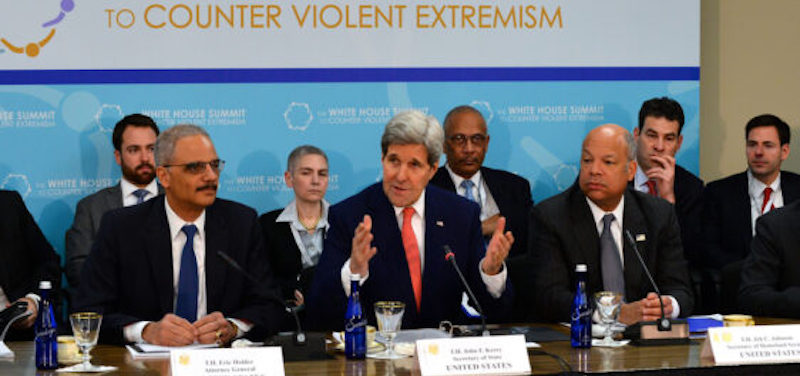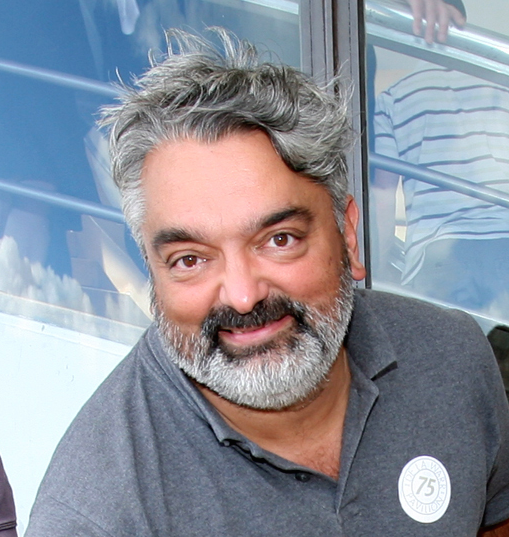Exercising discretion in a war on extremist media

It’s one of those opinions that as soon as heard, just sound true. That, against their better judgement, the media development sector feels pressure from their donors and the authorities to participate in government programmes for “countering violent extremism” (CVE) and propaganda.
The Global Forum for Media Development (GFMD), the sector’s de facto ‘trade body’, believes it is a threat. It fears its members may be pressed to contribute to CVE programmes, “much against their will and in contradiction to their own ethical standards”. And to help address the problem, it has organised a session at next week’s RightsCon in Brussels, to come up with a set of ‘Do-No-Harm Principles & Best Practices’ in response.
In fact a well-researched 2016 report by Courtney Radsch for the Center for International Media Development (CIMA) found little conclusive evidence of a significant trend in donor funding favouring CVE. There was increased sensitivity, notably in Lebanon and in the wake of major European terror attacks, but it was hard to track a wider impact. Increased funding for such programmes appeared to be coming from new sources and budget lines.
The media itself is facing a score of existential crises; the incredible growth of social media, its own declining credibility, ‘fake news’, political interference, worse and worse, and more. No surprise then that media development – international aid in support of free expression, media diversity and the independent media’s contribution to democratic discourse – should share in the collective soul-searching by the media as a whole.
The RightsCon session aims to set Do No-Harm Principles & Best Practices for the media development sector in addressing the ‘Preventing Violent Extremism/ Countering Violent Extremism/ Counter-Propaganda (PVE/CVE/CP)’ agenda. In truth the CVE agenda is losing political traction in the US and UK, and appears to be failing in Europe, where dozens of lives have been lost to terrorists driven by motivations far more complex than online chatter.
The idea that online propaganda is radicalising a generation of isolated, angry killers is a pervasive one. But as University of East Anglia researcher Kate Ferguson notes, there’s little evidence to prove a direct link between propagandised radical ideas and terrorist intent. Even the FBI is cautious about using evidence of interaction with radical ideas online as a clear predictor of terrorist acts, according to internal papers just published by the US Brennan Center for Justice.
Ferguson’s study, published last November, led her to question both the perceived problem and the proposed solutions. “The hypothesis,” she writes, “that VE (violent extremist) narratives or the real life threat of VE can be countered by an alternative set of communications remains unproven.” UK CVE literature and policy strongly focuses on the language of counter-narratives, she says, yet “a common understanding of this relatively new lexicon has yet to emerge”.
A greater fear is that CVE strategies are a cover used by the authorities for collecting actionable intelligence in the war on terror. The Brennan Center cites another internal FBI document that refers to CVE as a way to “strengthen our investigative, intelligence gathering, and collaborative abilities to be proactive in countering violent extremism”.
The authorities in the US – and the UK, where the government’s CVE strategy Prevent has been similarly accused – maintain that “investigations or intelligence collection” are “not the goal of CVE efforts,” as the Obama administration said in October 2016 (though it’s clear that Donald Trump has a different agenda.)
Whatever, most media rights and free expression advocates are suspicious of the whole argument. Academics Matti Pohjonen & Rima Ahmed call on people to put “critical distance” between themselves and both “utopian and/or dystopian conceptualisations of digital technology and conflict”. Writing in the journal Security & Peace they described a new ‘dispositif’ of risk; pre-emptive action targeting the imagined dangers of digital technology.
At this point it may appear to many that the simplest thing would be to just walk away from the CVE & counter propaganda agenda. But the GFMD still calls for “clear and proportionate principles” to guide the media development community when contributing to CVE programmes. Media development expert Joan Barata Mir outlined the key objectives in a paper circulated to GFMD members ahead of the session. It aims for a stable discourse between media institutions, donors, political institutions and authorities – one that protects digital rights and media freedoms.
The CVE & counter-propaganda agenda, Barata Mir correctly says, is generally seen from the perspective of counter-terrorism operations, or the promotion of tolerance and non-discrimination. “(Its) impact on digital rights, activism, investigative journalism, as well as media development has not been properly considered yet on such (a) multi-stakeholder basis.”
Barata Mir also rightly cites concerns about the role of digital intermediaries, the internet service providers, regulators and search & social corporate giants. They are under pressure to act more directly to cut off violent extremist content.
This raises concerns that wider free expression rights may be put at risk. He poses the question: “In what ways can the media development community, media freedom and freedom of expression activists, media regulators, and digital rights groups collaborate further in strengthening the ethical approach towards (CVE & counter propaganda)?”
This is a difficult one to answer for media rights defenders, many who will feel that the only truly ‘ethical’ approach to CVE & counter-propaganda is to have nothing at all to do with it.
But this is ‘media development’, regarded here as a sub-set of international development assistance, not exclusively a matter of human rights or free expression rights, and not specifically media rights either.
“The current consensus-based development system is dependent on reaching broad agreement among highly diverse political cultures,” James Deane of BBC Media Action has argued. “Such a system does not provide an effective platform from which to devise meaningful strategic action on an issue as politically charged, and apparently divisive, as integrating support for free media into development strategies.”
It is difficult to use theories of aid & development practice as a means to rationalise the competing demands of responsibility, consensus, representative democracy and freedom of speech, in considering journalism’s duty to all four.
Barata Mir has a go anyway, co-opting academic Mary B Anderson’s “Do No Harm” concept. Her thinking recognises that international assistance in crisis situations, no matter how well-meaning, always have unevenly shared and unintended consequences, both good and bad. Thus the impact of aid is not neutral in its effect on whether conflict worsens or abates.
Under Anderson’s lights, supporting CVE & counter propaganda in a conflict setting “can reinforce, exacerbate, and prolong the conflict. It can also help to reduce tensions and strengthen people’s capacities to disengage from fighting and find peaceful options for solving problems.” Often it will do some of both. In some ways it worsens the conflict, and in others it supports disengagement. “But it all cases,” she argues, “aid given during conflict cannot remain separate from the conflict”.
So to borrow from Anderson, media development NGOs should:
- Try to identify local actors and local networks that can promote peace.
- Design their aid programmes to support local peacemakers and reinforce positive networks.
- Be aware that judgments identifying local peace actors may constitute dangerous and inappropriate social engineering.
None of this can be said to be bad advice, even without citing critiques of “peace journalism,” developed by the Norwegian media theorist Johan Galtung, criticism that raised some of the ethical and political conundrums now being borne by the debate around media development and CVE today.
But none of it sits well with CVE & counter-propaganda strategies forged in complex political situations either. All are almost exclusively focused on immediate threat before context, and evidence of Islamist extremist activity.
Ferguson was struck by the way this overwhelming focus on current jihadi violence framed the CVE agenda across academic and non-academic research. Recent research into far-right extremism, or lessons from Northern Ireland, the former Yugoslavia, Great Lakes, and other identity-based crises are rarely cited. “Instead of asking what role new media plays in facilitating violent radicalisation,” write Pohjonen & Ahmed, “we need to examine the context in which it has been imagined as something in the first place and with what consequences.”
In the end the most beneficial outcome of the GFMD’s meeting will be if it encourages a broader and more rigorous approach to gathering evidence about the true nature of the problem it poses. And whether the media development sector is really best qualified to solve it.
Universal Do-No-Harm Principles and Best Practices for Preventing and Countering Violent Extremism Counter-Propaganda – How Do We Get There? Organised by the Global Forum for Media Development (GFMD) for Thursday 30 March, 13:15-14:30, in the Arabesque Room, Ground Floor at RightsCon, The Crowne Plaza Hotel Le Palace, Brussels.
References
- Anderson, M., 1999, ‘Reflecting on the Role of Aid’ in Do No Harm: How Aid Can Support Peace – or War, Lynne Rienner Publishers, pp. 145-147.
- Deane, J., 2015. Media And Communication In Governance: It’s Time For A Rethink. A Governance Practitioner’s Notebook, p.265.
- Ferguson, K., 2016. Countering Violent Extremism Through Media And Communication Strategies: A Review Of The Evidence. University of East Anglia: Partnership for Conflict, Crime, and Security Research.
- Pohjonen, M., Ahmed, R., 2017. Narratives of Risk: Assessing the Discourse of Online Extremism and Measures Proposed to Counter It, Sicherheit und Frieden, pp 236 – 241.
- Radsch, C.C., 2016. Media Development and Countering Violent Extremism: An Uneasy Relationship, a Need for Dialogue, Center for International Media Assistance (CIMA), at the National Endowment for Democracy, p 11

